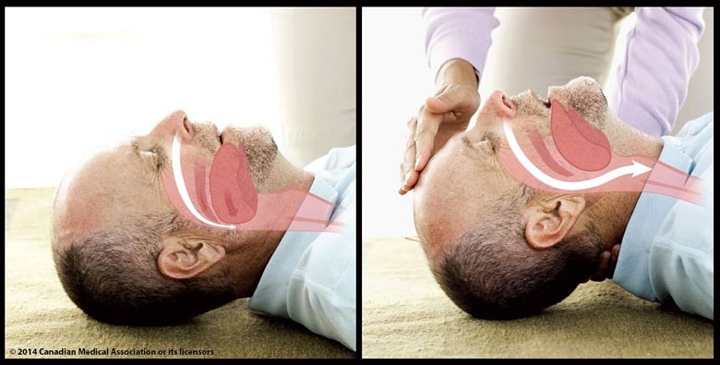Watch above: Dr. Samir Gupta explains what to do if you witness a cardiac arrest.

TORONTO — Health officials zeroed in on the chest compressions and pushed aside mouth-to-mouth ventilation when they revised CPR guidelines a few years ago. Now, a Canadian doctor suggests that we’re doing CPR all wrong.
You may be pushing on the unconscious person’s chest while calling for help, but if you aren’t tilting his head back, your efforts will be fruitless because you’re not opening the airway, according to Dr. Anthony Ho.
In a new Canadian Medical Association Journal commentary, published Monday, the Queen’s University professor and his team suggest that the latest CPR guidelines are flawed.
“I’m talking about a situation where you may have a second bystander around and that’s very common. The second person does not have to be skilled, they’d only have to lift the chin and tilt the head backwards. You open the airways and that doesn’t take much skill,” Ho explained.
He’s referring to the head-tilt-chin-lift technique used in rescue breathing.
Before giving mouth-to-mouth resuscitation, Canadians are advised to place one hand on the patient’s forehead, tilting his head back. The other hand is placed under the chin, lifting the chin forward.
Ho is an anesthesiologist and while putting his patients under, he still abides by the maneuver. Doing so opens the airway and keeps the tongue from obstructing the back of the throat in comatose patients.
READ MORE: ‘Once you commit to CPR, you have to stick with it’ – Christine Newman’s survival
But in 2010, international guidelines on cardiopulmonary resuscitation were revised and, for everyday people, mouth-to-mouth was scrapped.
Chest compressions became the cornerstone of CPR. The recommendations called on bystanders administering CPR to “push fast and push hard” on the chest instead of trying to remember how to juggle chest compressions with mouth-to-mouth breathing.
An organization called ILCOR — or the International Liaison Committee on Resuscitation — is the global body that oversees and maintains CPR guidelines. It has experts from Canada, the U.S., Europe, Australia and Asia. Canada, for its part, includes Heart and Stroke Foundation experts on the ILCOR committee.
Heart and Stroke spokesman Dr. Andrew Travers is an ILCOR co-chair in basic life support. He was part of the panel that revised the guidelines.
He calls the revisions a “paradigm shift.” It’s not that officials canned mouth-to-mouth breathing and the head-tilt technique, it’s just that they learned that chest compressions should be the focus.
Rescue breathing took away from chest compressions, and doing proper mouth-to-mouth is tricky.
It’s also intimidating and scared bystanders away from helping out of fear they’d make the situation worse. The revision simplified CPR.
“Chest compressions are first and foremost and that doesn’t negate the airway. If you’re able to build on chest compressions, then do both, but don’t sacrifice the chest compressions,” Travers explained.
“It’s always been a source of debate,” he told Global News from Halifax.
READ MORE: Untrained urged to use CPR on heart attack victims
Keep in mind, rescue breathing is still encouraged for emergency medicine experts and first responders. They often work in teams and have a better grasp with CPR, Travers said. Their teamwork is “choreographed.”
Researchers suggest that the average survival rate is 12 per cent for people who receive chest compressions with mouth-to-mouth resuscitation. Those who get chest compressions have a 14 per cent survival rate.
Ho suggests that means there’s still plenty of room for improvement.
The Canadian Red Cross says it trained about 711,000 people last year in CPR. Don Marentette, the national organization’s director of first aid program development says that he didn’t agree with the dismissal of the ABCs — Airway, Breathing and Compressions.
With the ABCs, Canadians are trained to check the airway, feel for breathing and check for circulation.
But Marentette said he understands why officials tried to boil down the CPR procress.
“There was a time when people were very nervous to act fast in case they’d do something wrong. For years, we’d have a million steps to do CPR,” he told Global News.
“We want people to call 911 and do something in the meantime,” he said.
For the past few years, the Red Cross has been working on simplifying its training, through using songs to keep people keep the right pace, for example.
Ho’s full CMAJ commentary can be read here.
carmen.chai@globalnews.ca
Follow @Carmen_Chai




Comments